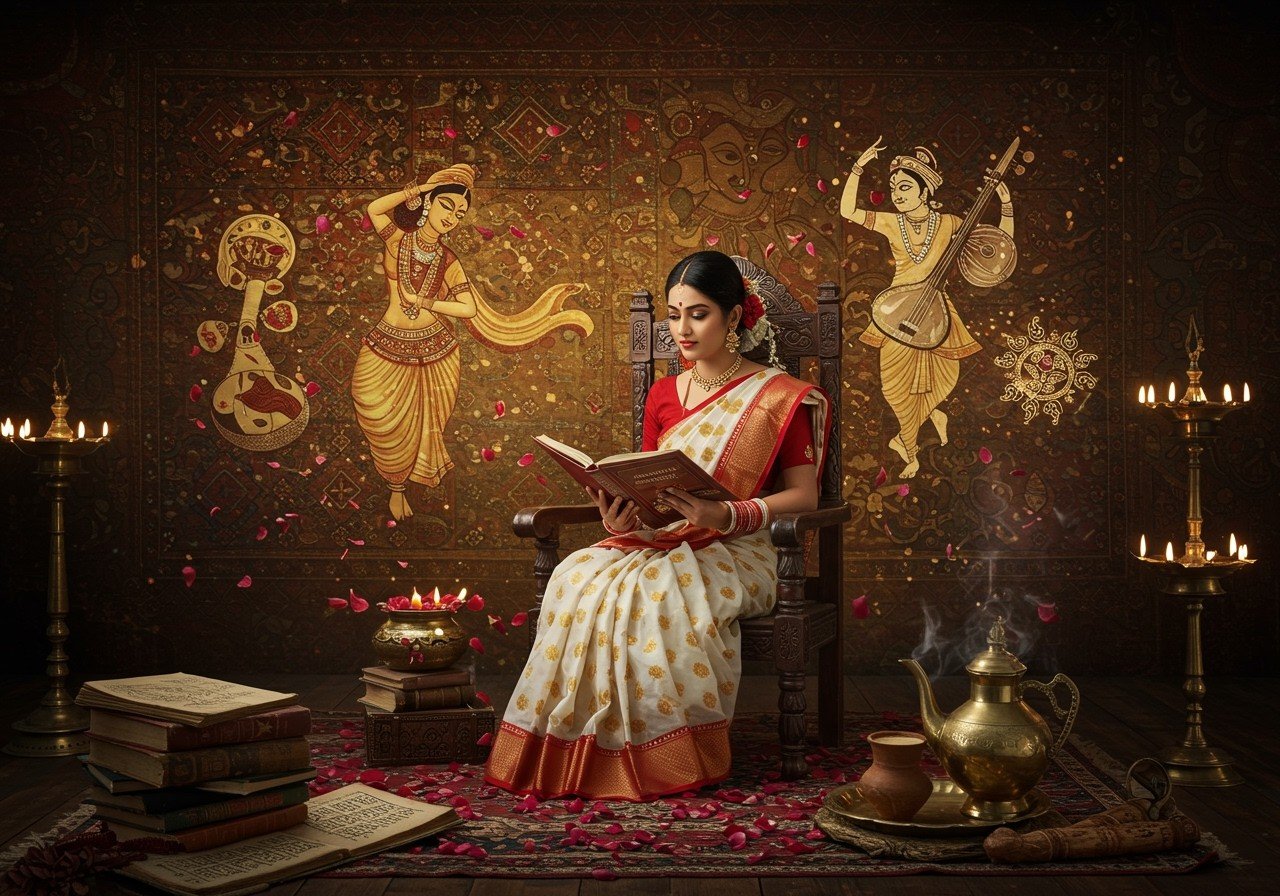
Bengal, a region steeped in culture, boasts a rich history encompassing language, literature, and arts. This blog delves into Bengal’s unique heritage, offering insights into its evolution. Whether you’re a history buff or simply curious about Bengali traditions, this exploration will deepen your appreciation for this culturally vibrant region.
Historical Context of Bengal
Bengal’s Historical Timeline
Bengal’s history spans from ancient times to the present day. Various dynasties, including the Maurya, Gupta, and Mughal empires, have shaped Bengal’s cultural landscape. The British colonial period also played a pivotal role in molding modern Bengal.
- Maurya and Gupta Dynasties (322 BCE – 550 CE): These eras witnessed a flourishing of art, literature, architecture, and philosophical thought, laying the foundation for Bengal’s rich cultural heritage. The fusion of indigenous traditions with influences from across the subcontinent led to a unique blend of artistic expression.
- Mughal Era (1526-1857): The Mughal period brought Persian influences, enriching Bengali culture with new architectural styles, literary forms, and culinary traditions. This era also witnessed the rise of syncretic religious practices and the development of a distinct Bengali identity within the larger Mughal empire.
- British Colonial Era (1757-1947): British colonialism significantly impacted Bengal, leading to socio-political movements like the Bengal Renaissance. This period saw the introduction of Western education and ideas, which both challenged and invigorated traditional Bengali culture.
The Bengal Renaissance, a transformative cultural movement, spurred advancements in literature, arts, and social reforms. Understanding these historical contexts illuminates the development of Bengal’s language, literature, and artistic expressions.
Evolution of the Bengali Language
Origins and Development
The Bengali language has its roots in Prakrit and Sanskrit, evolving into a distinct language during the medieval period. Its development reflects the region’s diverse influences and its people’s creative spirit.
- Early Influences (Before 1000 CE): Prakrit and Sanskrit significantly shaped the initial forms of Bengali, providing the foundational grammar and vocabulary upon which the language would build. The influence of these classical languages can still be seen in modern Bengali.
- Medieval Period (1000-1800 CE): Bengali emerged as a distinct language, developing its own unique literary traditions and evolving into a powerful medium for artistic expression. This period saw the emergence of various dialects and the flourishing of Bengali poetry and prose.
- Codification (19th Century Onwards): Ishwar Chandra Vidyasagar played a crucial role in standardizing Bengali grammar, paving the way for its widespread use in education and literature. His efforts helped solidify Bengali’s position as a major language in the Indian subcontinent.
Persian, Arabic, and English have also influenced Bengali vocabulary and syntax. The language played a vital role in the Indian independence movement, serving as a powerful tool for communication and mobilization.
Literary Heritage of Bengal
Ancient Texts to Modern Literature
Bengal possesses a rich literary tradition, spanning from ancient texts like the Charyapada, mystical poems dating back to the 10th century, to modern literary masterpieces. This literary heritage reflects Bengal’s intellectual and creative prowess.
- Medieval Poets (1200-1800 CE): Poets like Vidyapati and Chandidas significantly enriched Bengali literature, exploring themes of love, devotion, and social commentary. Their works laid the foundation for later literary developments and continue to be celebrated today.
- Golden Age (19th and early 20th centuries): This period marked the zenith of Bengali literature, witnessing the rise of literary giants like Rabindranath Tagore, Bankim Chandra Chattopadhyay, and Kazi Nazrul Islam. Their works explored a wide range of themes, from nationalism and social reform to spirituality and humanism.
Themes of romanticism, nationalism, and social reform are prominent in Bengali literature, reflecting the social and political climate of the time.
Bengal School of Painting
Art Movement
The Bengal School of Painting, a significant movement in Indian art, emerged in the early 20th century as a reaction against Western academic realism. It championed a return to indigenous artistic traditions and styles.
- Founding Figures: Abanindranath Tagore and E.B. Havell spearheaded this movement, advocating for a rediscovery of India’s artistic heritage. They inspired a generation of artists to explore new forms of expression rooted in Indian aesthetics.
- Philosophy: The Bengal School embraced indigenous styles, drawing inspiration from Mughal and Rajput miniatures, as well as traditional folk art forms. It rejected the prevailing Western academic style, emphasizing emotional expression and spiritual depth.
Contemporary Art in Bengal
Post-Independence Evolution
Post-independence, Bengali art continued to evolve, with contemporary artists making significant contributions to the art world. This period saw a dynamic interplay between tradition and modernity, resulting in diverse and innovative artistic expressions.
- Notable Artists: Artists like Ganesh Pyne and Shuvaprasanna are key figures in contemporary Bengali art, pushing the boundaries of traditional forms and exploring new mediums and themes. Their works reflect the changing social and cultural landscape of post-independence India.
- Modernism and Globalization: Modernism and globalization have profoundly impacted Bengali art, leading to experimentation with new styles, techniques, and concepts. Artists engage with global artistic trends while maintaining a strong connection to their cultural roots.
Conclusion
Bengal’s rich cultural history is a testament to its enduring legacy. From ancient dynasties to contemporary times, Bengal’s journey showcases a dynamic interplay of tradition and modernity. The evolution of its language, its literary heritage, and its vibrant arts scene reflect Bengal’s profound cultural depth.
Exploring Bengal’s unique heritage provides valuable insights and a deeper appreciation for its traditions. Whether you are a seasoned historian or simply curious, the journey through Bengal’s language, literature, and arts will enrich your understanding and connection to this culturally rich region.
For those interested in exploring traditional Bengali cultural items, Poojn.in offers a wide selection of authentic products.


